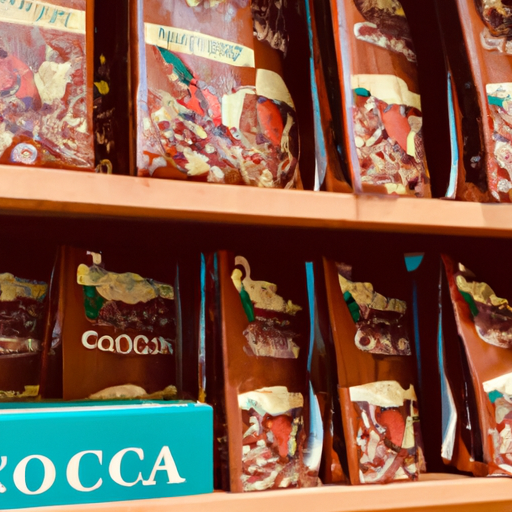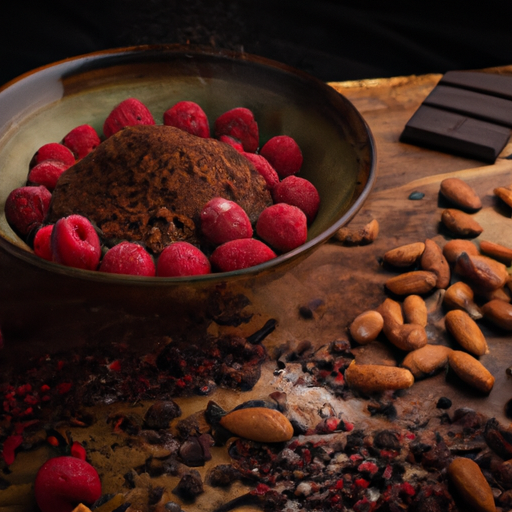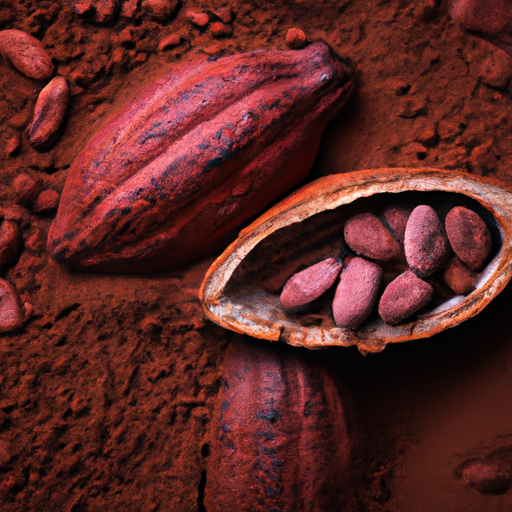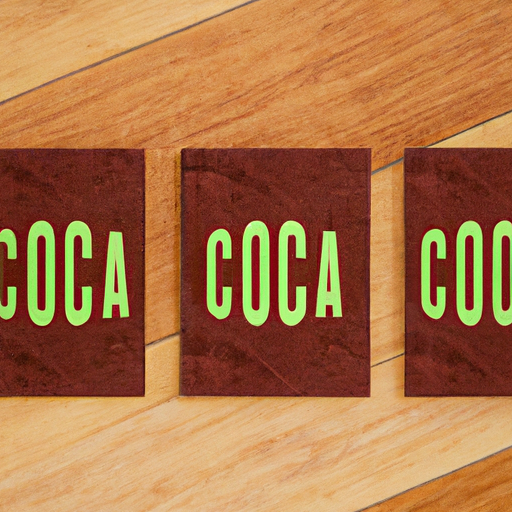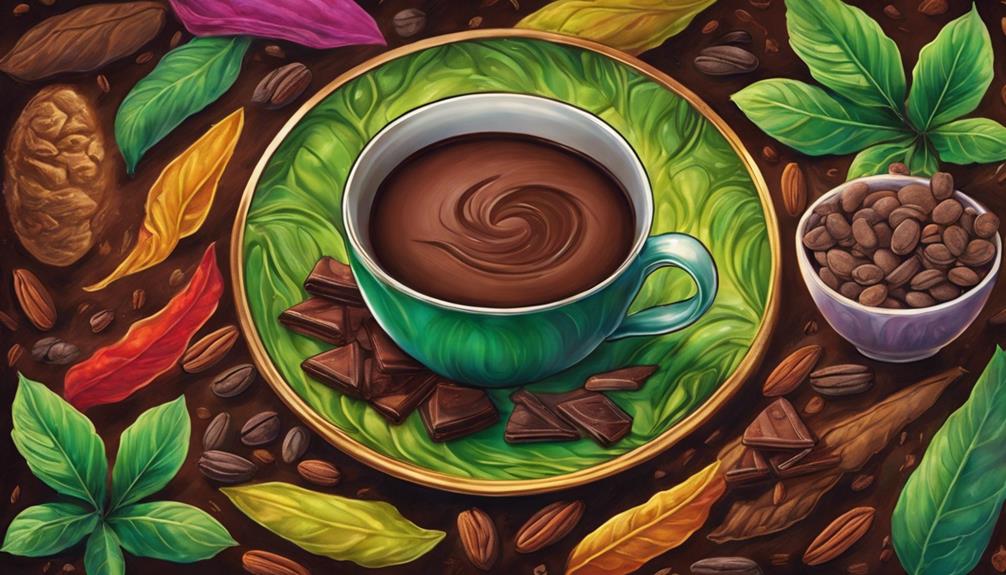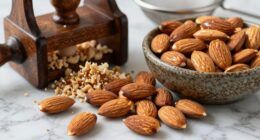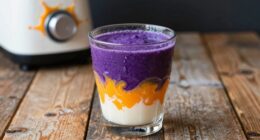Picture yourself enjoying the luxurious, smooth flavor of a decadent chocolate delight. The scent drifts through the atmosphere, captivating your senses with its irresistible charm. Now, envision that this indulgence not only fulfills your desires but also offers amazing advantages for your body. That is the magic of raw cacao.
Raw cacao, derived from the seeds of the cacao tree, is a nutritional powerhouse packed with essential nutrients. It is a natural mood booster, improving our sense of well-being and promoting a positive outlook. Moreover, raw cacao supports cardiovascular health by reducing the risk of heart disease and improving blood flow.
But the benefits don’t stop there. Raw cacao also enhances cognitive function and brain health, aids in weight management, promotes healthy skin, boosts energy and endurance, and improves gut health and digestion.
In this article, we will explore the extensive benefits that raw cacao brings to our bodies. So, grab a cup of hot cocoa and join me on this enlightening journey into the wonders of raw cacao.
Key Takeaways
- Raw cacao helps achieve/maintain healthy weight
- Offers benefits for skin health and anti-aging effects
- Provides energy and endurance boost
- Supports gut health and digestion
Nutritional Profile of Raw Cacao
Raw cacao is bursting with nutrients, like magnesium, iron, and antioxidants, that nourish and support the body’s overall health. These nutrients have various benefits for athletes, such as magnesium’s role in muscle function and iron’s contribution to oxygen transport.
Additionally, raw cacao contains minerals like calcium and phosphorus, which play a crucial role in maintaining bone health. The antioxidants found in raw cacao, such as flavonoids, have been shown to reduce inflammation and protect against oxidative stress, which can benefit athletes during intense training.
Furthermore, raw cacao is a rich source of vitamins, including B vitamins, which are essential for energy production and metabolism.
Moving on to the next section about mood-boosting properties, research suggests that raw cacao may have positive effects on mood and overall well-being.
Mood-Boosting Properties
Indulging in cacao can instantly uplift your spirits and put a smile on your face. Raw cacao has mood-boosting benefits due to its ability to increase serotonin production, a neurotransmitter that plays a crucial role in regulating mood and promoting feelings of happiness and well-being. Additionally, raw cacao is rich in antioxidants, minerals, and vitamins that contribute to various aspects of health. These nutrients, such as magnesium and zinc, support brain function and help regulate neurotransmitters involved in mood regulation. Raw cacao also contains phenylethylamine, a compound that promotes the release of endorphins, further enhancing mood. Scientific research and studies have shown the positive effects of raw cacao on mood, making it a natural and delicious way to improve your emotional well-being. Moving on to cardiovascular health benefits…
Cardiovascular Health Benefits
Consuming cacao can contribute to improved cardiovascular health. Studies have shown that regular consumption of dark chocolate, which contains high levels of cacao, can lower the risk of heart disease by up to 37%. This is due to the various components found in cacao that have been linked to cardiovascular benefits.
For example, cacao is rich in antioxidants, such as flavonoids, which help reduce inflammation and oxidative stress in the body. Additionally, cacao contains minerals like magnesium and potassium, which are important for maintaining a healthy heart and blood pressure.
Furthermore, the consumption of cacao has been shown to improve lipid profiles by reducing LDL cholesterol levels and increasing HDL cholesterol levels. These cholesterol-modulating effects can further contribute to cardiovascular health.
Transitioning into the next section about cognitive function and brain health, it is important to note that the benefits of cacao extend beyond just the cardiovascular system.
Cognitive Function and Brain Health
Raw cacao has been shown to have positive effects on cognitive function and brain health. It enhances focus and concentration, allowing individuals to better concentrate on tasks and improve their productivity.
In addition, raw cacao supports memory and learning by promoting blood flow to the brain and supplying it with essential nutrients.
Furthermore, raw cacao contains powerful antioxidants that help protect against neurodegenerative diseases, such as Alzheimer’s and Parkinson’s, by reducing inflammation and oxidative stress in the brain.
Enhances Focus and Concentration
Boost your mental clarity and laser-like focus with the power of raw cacao. This natural superfood contains a combination of compounds that can enhance your ability to concentrate and stay focused. Here are four ways raw cacao can improve your focus and concentration:
-
Stimulates blood flow: Raw cacao contains flavanols, which can increase blood flow to the brain. This improved circulation helps deliver essential nutrients and oxygen, supporting optimal brain function.
-
Enhances neurotransmitter activity: Raw cacao contains phenylethylamine (PEA), a compound that promotes the release of dopamine and serotonin. These neurotransmitters play a crucial role in regulating mood and focus.
-
Provides caffeine-like effects: Raw cacao contains a small amount of natural caffeine, which can provide a mild stimulant effect. This can help increase alertness and improve concentration.
-
Reduces oxidative stress: The antioxidants found in raw cacao, such as flavonoids, help fight against free radicals and reduce oxidative stress in the brain. This can contribute to improved cognitive function and focus.
By enhancing focus and concentration, raw cacao sets the stage for improved memory and learning.
Supports Memory and Learning
Improve your ability to remember and learn with the help of raw cacao’s support for memory and learning.
Raw cacao contains various nutrients that contribute to cognitive function and memory support. First, it is rich in antioxidants, such as flavonoids, which have been shown to improve memory and protect against age-related cognitive decline.
Additionally, raw cacao is a good source of minerals like magnesium, which plays a crucial role in brain health and memory formation.
Moreover, cacao contains vitamins, including B vitamins, which support brain function and neurotransmitter synthesis. These nutrients work together to enhance cognitive abilities, including memory retention and learning capacity.
Incorporating raw cacao into your diet may help support memory and improve overall cognitive function.
Moving forward, we will explore how raw cacao protects against neurodegenerative diseases.
Protects Against Neurodegenerative Diseases
Incorporating raw cacao into your diet can be like building a fortress for your brain, protecting it against the relentless onslaught of neurodegenerative diseases. Raw cacao is rich in antioxidants, minerals, and vitamins that contribute to various aspects of health, including brain health.
Research has shown that the antioxidants in raw cacao have neuroprotective effects, helping to reduce oxidative stress and inflammation in the brain. These effects can potentially slow down the progression of neurodegenerative diseases such as Alzheimer’s and Parkinson’s.
Additionally, raw cacao contains flavonoids that improve blood flow to the brain, enhancing cognitive function and memory. Consuming raw cacao regularly may therefore help support brain health and reduce the risk of developing these debilitating conditions.
Transitioning into the subsequent section about ‘weight management’, it is important to note that raw cacao can also be beneficial for maintaining a healthy weight.
Weight Management
Maintaining a healthy weight becomes easier when you include raw cacao in your diet. Raw cacao contains a variety of nutrients that can contribute to weight management and appetite control. It is rich in fiber, which helps to promote feelings of fullness and reduce overeating. Additionally, raw cacao contains compounds that may have a positive impact on metabolism and fat oxidation. Studies have shown that consuming cacao can increase energy expenditure and enhance fat burning. Furthermore, the antioxidants present in raw cacao can help to reduce inflammation and improve insulin sensitivity, which are important factors in weight management. Incorporating raw cacao into a balanced diet can be a beneficial strategy for those looking to achieve or maintain a healthy weight. Transitioning to the next section, raw cacao also offers benefits for skin health and anti-aging effects.
Skin Health and Anti-Aging Effects
Get ready to discover how raw cacao can work wonders for your skin, giving you a youthful and radiant glow.
The anti-inflammatory effects of raw cacao can help reduce skin redness, inflammation, and irritation. Additionally, raw cacao is rich in antioxidants, minerals, and vitamins, which play a crucial role in collagen production. Collagen is a protein that keeps our skin firm and elastic, preventing the formation of wrinkles and fine lines.
The antioxidants present in raw cacao also protect the skin from free radicals, which can cause premature aging. Scientific research and studies have shown that consuming raw cacao or applying it topically can improve skin health and promote a more youthful appearance.
Transitioning into the next section, raw cacao not only benefits the skin but also provides an energy and endurance boost.
Energy and Endurance Boost
Boost your energy and endurance to superhero levels with the amazing power of raw cacao. Here are four ways that raw cacao can enhance your energy levels and athletic performance:
-
Increased blood flow: Raw cacao contains flavonoids and theobromine, which help dilate blood vessels and improve circulation. This increased blood flow delivers more oxygen and nutrients to your muscles, giving you a boost in energy.
-
Enhanced stamina: The magnesium content in raw cacao supports muscle function and helps reduce fatigue. By incorporating raw cacao into your diet, you may experience improved endurance during physical activities.
-
Mental alertness: Raw cacao contains small amounts of caffeine, a natural stimulant that can increase focus and alertness. This can be particularly beneficial for athletes looking for an extra mental edge during competitions or workouts.
-
Reduced inflammation: The antioxidants found in raw cacao have been shown to have anti-inflammatory properties. Lower levels of inflammation can help support faster muscle recovery and reduce the risk of injury.
By incorporating raw cacao into your diet, you can boost your energy and endurance levels, leading to improved athletic performance.
Now, let’s explore the next topic of ‘gut health and digestive benefits.’
Gut Health and Digestive Benefits
Improving your gut health and digestion can be a game-changer for overall well-being and performance. Raw cacao can play a beneficial role in this aspect.
The gut microbiome, which consists of trillions of microorganisms, plays a vital role in digestion and overall health. Raw cacao contains polyphenols, which have been shown to have a positive impact on the gut microbiome by promoting the growth of beneficial bacteria.
Additionally, raw cacao contains digestive enzymes, such as amylase and lipase, which help break down carbohydrates and fats, aiding in digestion. These enzymes can enhance nutrient absorption and reduce digestive discomfort.
Incorporating raw cacao into your diet can support a healthy gut and optimize digestion.
Transitioning into the subsequent section, let’s explore how to incorporate raw cacao into your daily routine.
Incorporating Raw Cacao into Your Diet
To make the most of raw cacao’s benefits, you can easily incorporate it into your daily routine.
One way to incorporate raw cacao is by using it in recipes. Raw cacao can be added to baked goods, such as cookies or brownies, to enhance their flavor and provide a nutritional boost.
You can also sprinkle raw cacao nibs on top of yogurt or oatmeal for added crunch and chocolatey goodness.
Another way to enjoy the benefits of raw cacao is by adding it to smoothies. Raw cacao powder can be blended with fruits, vegetables, and a liquid of your choice to create a delicious and nutritious smoothie.
By incorporating raw cacao into your diet, you can reap the benefits of its antioxidants, minerals, and vitamins, which contribute to various aspects of health.
Frequently Asked Questions
Can raw cacao help with reducing the risk of heart disease?
Raw cacao may help reduce the risk of heart disease by reducing inflammation and improving blood flow. Its antioxidants, minerals, and vitamins contribute to cardiovascular health, supported by scientific research and studies.
Is raw cacao beneficial for improving cognitive function and memory?
Raw cacao has been found to improve focus and enhance brain health. It contains antioxidants, minerals, and vitamins that support cognitive function and memory. Scientific research supports the benefits of raw cacao for brain health.
Can consuming raw cacao help with weight loss?
Consuming raw cacao can potentially aid in weight loss due to its effects on metabolism and appetite suppression. Raw cacao contains compounds that can boost metabolism and reduce cravings, supporting weight management efforts.
Does raw cacao have any negative effects on the skin?
Negative effects of raw cacao on the skin may include allergic reactions. It is important to note that while raw cacao has numerous benefits for the body, it is always recommended to consult with a healthcare professional before making any dietary changes.
How much raw cacao should be consumed to experience its health benefits?
To experience the health benefits of raw cacao, it is recommended to consume a moderate amount. Incorporating raw cacao into a balanced diet can contribute to heart disease prevention, cognitive function improvement, memory enhancement, and weight loss aid. The effects on the skin are minimal.
How Does Raw Cacao Benefit the Body?
Raw cacao benefits explained include a high antioxidant content, which can help reduce oxidative stress in the body. It also contains minerals like magnesium, which is essential for muscle and nerve function. Additionally, raw cacao may have mood-boosting effects due to its ability to release endorphins.
Conclusion
In conclusion, raw cacao offers a plethora of benefits for the body. Its rich nutritional profile, including antioxidants, minerals, and vitamins, supports cardiovascular health, cognitive function, weight management, and skin health.
Additionally, raw cacao’s mood-boosting properties, energy and endurance boost, and positive effects on gut health make it a valuable addition to any diet.
Incorporating raw cacao into your daily routine can provide numerous health advantages backed by scientific research. So go ahead, indulge in the delicious and nutritious goodness of raw cacao for a healthier you.


